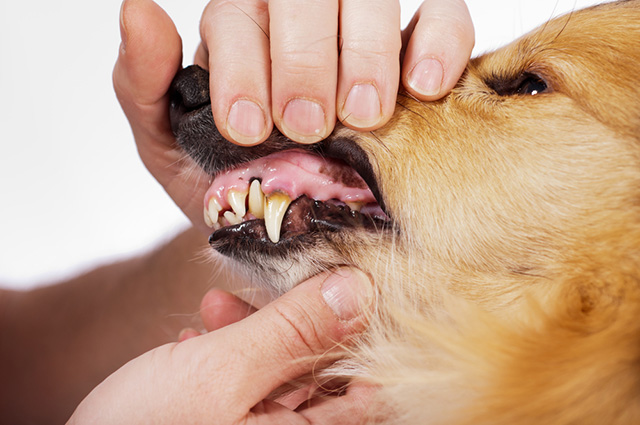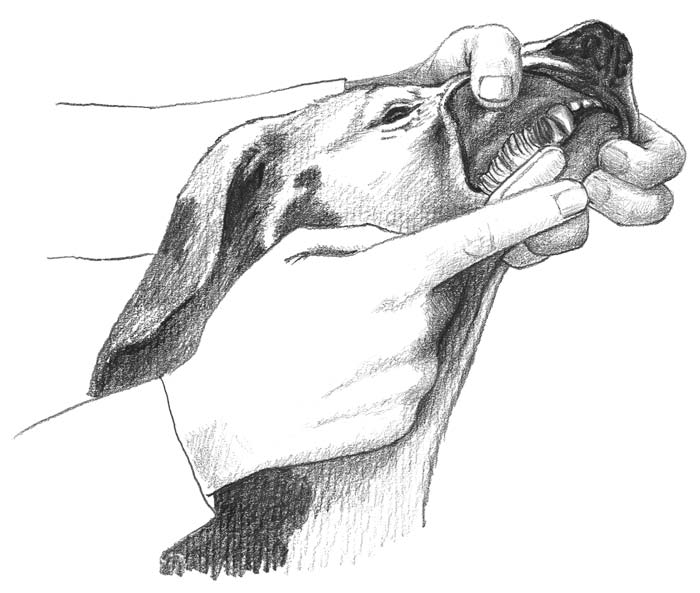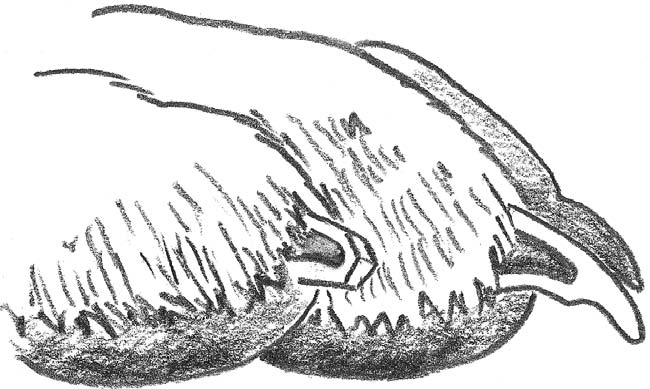
In This Chapter
- Keeping the toenails trimmed and ears clean
- Getting “expressive” with your doggie’s derriere
- Brushing your dog’s teeth and caring for her eyes
- Putting your dog’s best face forward
The Art of the Paw-dicure
Making toenail trimming a pleasant experience
Remember
If all else fails, there’s no shame in having a professional groomer or veterinarian trim them.
– Get your dog used to your handling her feet. This tip is of utmost importance. Most dogs simply detest having their feet handled, so the sooner you get your dog used to enduring it, the better (and easier) giving your dog a weekly manicure can be.
– Ask for help getting started. If your dog’s nails are too long the first time you think about trimming them yourself, ask your veterinarian or a groomer to show you how to trim them to the right length. After that, you can trim them every week or so.
– Trim one paw at a time. This technique is a good one for fussy dogs. You can trim one paw at a time, giving your dog a rest before moving on to another paw.
– Provide a treat. Giving your dog a yummy treat after trimming her toenails also helps, and so do big hugs, a boisterous “Good dog!” and a vigorous scratch behind the ears.
– Try a nail grinder rather than clippers. Sometimes dogs who can’t tolerate nail trimmers can deal with a nail grinder. If you’re experiencing major problems clipping toenails, a nail grinder (which looks like a rotary tool) may work.
– Trim your dog’s nails once a week: Ideally, you need to trim your dog’s nails once a week. Weekly nail trimming not only helps keep them in good shape and prevents problems like broken nails, but it also gets your dog used to having a routine manicure.
Remember
If you hear your dog’s nails clicking as they touch a hard surface (floor or sidewalk), it’s time for a nail trim.
Gathering the tools you need
– Nail cutters for dogs: Use either the guillotine or scissors styles.
– Styptic powder or a nail-cauterizing tool: You need one of these products in case you cut the quick (blood supply in the nail) and cause bleeding. Find out more about this problem in the next section.
– A slightly damp washcloth: Use a washcloth to clean up any styptic powder or other messes you may make.
– A nail file or nail grinder: The file or grinder smoothes the rough edges of the nail.
– Cotton swabs: Use them to apply styptic powder.
– A batch of yummy treats: Rewarding your best bud for a toenail-trimming job well done helps ease your dog through the procedure.
Nailing trimming basics
Warning!
If your dog has white nails, you’ll be able to see the quick. However, many dogs have black or dark-colored nails, and no matter what tricks you may have heard, seeing the quick in them is impossible. You have to snip very carefully and look closely at the nail. If the nail feels spongy while you’re trying to cut it, stop immediately! Always err on the side of caution.
Warning!
If you cut the quick (often called quicking), you’ll have an unhappy dog and a bloody mess. The quick bleeds a great deal, so if you cut it, you need either a nail cauterizer or styptic powder to stop the bleeding. Pack the nail with the styptic powder or use the cauterizer on the nail. Quicking hurts a lot, and most dogs remember the experience long afterward.
However, also hold your dog’s foot gently.
Place a tiny bit of the nail in the nail clipper and snip. Most people prefer to have their dog lying down or sitting when they cut the toenails. Use whatever method is most comfortable for you and your dog.
Doing the dewSome canine breed standards require dewclaws for animals that are intended for the show ring. For example, rear double dewclaws are the standard for Great Pyrenees. Other standards say that rear dewclaws need to be removed. Check the breed standard at www.akc.org. Before removing dewclaws on a puppy you plan to show, check with the breed standard to find out whether removal is allowable. In working dogs, the breeder or vet needs to remove dewclaws when the puppy is 3 to 5 days old, to prevent injuries when dewclaws are torn. Removal of dewclaws any time after that requires surgery and anesthesia at the vet’s office. If you plan to remove the dewclaws from a litter, have your vet show you how. If it’s not done right, you can end up with malformed dewclaws or worse — an injured or crippled puppy. |
Remember
Don’t forget the dewclaws — the dog’s useless “thumbs.” They’re located on the inside of the leg above the foot. Most dogs have dewclaws in the front; some also have them in the rear. Some dogs have dewclaws; others don’t. If your dog has them, pay special attention when trimming them. They tend to grow long because they don’t normally touch the ground. If you don’t cut them, they’ll eventually grow back into your dog’s foot, which is painful.
Do You Hear What I Hear?
Technical Stuff
Dog owners (usually Poodle owners) often pluck the hair inside their dog’s ears. They use ear powder to dry the ear and yank out the hair. Ouch! Dogs don’t like this procedure. But if your dog has hair growing in his ears and has a lot of infections, you may have to do some plucking. Ask your vet.
Making ear cleaning more pleasant
– Get your dog used to your gently handling his ears. Get him used to your touching his ears (a gentle ear scratch), holding his ears, flipping them up (if he has hanging or dropped ears), and looking in his ears.
– Clean your dog’s ears when he’s a bit tired. The less your dog fights with you, the less he’ll have his ears pulled.
– Clean your dog’s ears once a week. The longer you wait to perform a grooming task like this one, the longer it takes and the worse the experience is likely to be for the dog and for you.
– Give treats for behaving while you clean his ears. Give him a goody even if he’s good only long enough for you to touch his ears.
– Never pull on your dog’s ears or jab deep into them. It’s painful, and if you do it, your dog will never let you near his ears again.
Gathering the tools you need
– Mild otic (ear-cleaning) solution for dogs: Don’t use anything with insecticides. Otic solution is available at groomers’ supply houses.
– Sterile gauze, cotton swabs, or sponges: Use these items to remove the otic solution or cleaner.
– Surgical forceps or clamps: No, you’re not doing surgery. You wrap the clamp or forceps with the gauze and then wipe the gauze inside the ears to clean out any dirt and otic solution.
Cleaning your dog’s ears
Cleaning your dog’s ears is fairly uncomplicated. Proceed slowly and be sure not to enter the ear canal.
Sitting down beside your dog usually works.
Gently massage the outside of the ear canal to help the solution do its work.
You can wrap the gauze or sponge completely around the forceps or the clamp to wipe around the ear.
Don’t use insecticides or mite treatments, because they can cause irritation. If you notice any red dirt, anything that looks like coffee grounds, or a waxy buildup and you suspect ear mites, see your vet.
Recognizing an ear problem
- Blisters or abrasions on the ears
- Crusty or red ears
- Excessive or red or black waxy buildup
- Foul-smelling odor coming from the ears
- Your dog scratching or pawing her ears or shaking her head
- A yelping reaction when you touch her ears
No Butts About It: Getting Expressive
Warning!
Ask your vet before attempting to express your dog’s anal sacs for the first time. In bizarre instances, you can rupture the sacs.
Gathering the tools you need
– Paper towels: Having plenty of paper towels for any type of cleanup always helps. You may even want to try a diaper wipe or other moistened cleansing wipe.
– A clothespin, heavy-duty rubber gloves, welder’s apron, rubber boots, and tongs: With these tools, you can glove up, cover up, and thus avoid the gag reflex the way Michael Keaton does while changing diapers in Mr. Mom.
Expressing yourself
Doing so provides an absorbent pad to catch the liquid.
Note the position of her anus in relation to the paper towels.
Keep your face out of the way! (You’re welcome!)
A clean doggie rump is a healthy doggie rump.
Warning!
If your dog shows discomfort back there and her sacs aren’t producing fluid, she may have an impacted or infected anal sac, which requires veterinary intervention.
Care for Those Pearly Whites
Remember
Brushing your dog’s teeth obviously is important, but how often you do it depends on your dog and your motivation factor. Poor doggie dental care, however, can lead to dental infections that can travel to your pooch’s heart, causing major problems and even death. How’s that for motivation?
Making brushing doggie pleasant
– Brush frequently. You should brush your dog’s teeth every day, but realistically, you’re better than most pet owners if you can brush them once or twice a week. Frequent brushing gets your dog used to the brushing routine and to the idea of having his mouth invaded.
– Choose the best time. A great time for brushing is right after your dog has exercised and is a little tired. At least, that time’s preferable to when he’s willing to fight with you over handling his mouth.
– Train your dog to allow you to touch his mouth. You can get him to tolerate having his mouth handled by doing so from an early age.
– Get him ready to have his teeth brushed in this way:
- Flip up his lips (see upcoming Figure 3-3).
- Wet the edge of a clean washcloth so you can rub your dog’s gums and teeth; hold a corner of the wet portion of the washcloth with your index finger and use a gentle, circular motion.
- Talk to your dog in calm, soothing tones.
- If your dog grows impatient, do Steps 1 through 3 for only a few seconds, and then stop and give him a treat.
- Repeat Steps 1 through 4 again tomorrow, gradually lengthening the amount of time you spend doing them.
Gathering the tools you need
Warning!
– Toothpaste for dogs: Don’t ever use human toothpaste! Human toothpaste contains fluoride, which in large quantities is poisonous to dogs. Dogs can’t rinse and spit, so they pretty much swallow everything you put on their teeth. Doggie toothpaste is flavored with malt, chicken, or some other yummy flavor that dogs can’t resist. It makes the experience more enjoyable.
– Toothbrush for dogs: A finger toothbrush that’s made for pets is best.
Brushing your dog’s teeth
Warning!
At the risk of repeating this information, never use human toothpaste on a dog. Okay now, follow these steps to properly brush your dog’s teeth:
Most dogs like the flavor, but some don’t. Don’t worry about it one way or the other.
Warning!
Some people like to purchase a dental scalar, a device they use to scrape away plaque from their dogs’ teeth. Unfortunately, if you’re not careful, you can injure your dog’s gums, not to mention make one unhappy pooch. That form of teeth cleaning is better left to your vet, especially when your dog has a lot of tartar and buildup and big teeth. And if your dog has loads of tartar buildup, get your dog to a vet first to have her teeth cleaned.
Spotting a dental problem
- A lump above or below a particular tooth or under an eye
- Bad breath
- Broken teeth
- Loss of appetite
- Nasal discharge
- Red, swollen gums
- Sudden, unexpected chewing on inappropriate items
- A grayish or darkened tooth
Tip
Other ways of keeping your dog’s teeth cleanIf your dog doesn’t handle brushing well, you can use one of several methods for keeping your dog’s teeth clean. Most of these methods have something to do with feeding him the right kind of food and giving him appropriate kinds of chews. You can use these items to clean those pearly whites:
|
Shiny, Bright Eyes
Technical Stuff
Dogs have various eye shapes and sizes. Some dogs, especially breeds with brachycephalic (short, pushed-in) heads — Pugs and Pekingese — tend to have large, protruding eyes that are more susceptible to accidental injury. Other dogs have almond-shaped eyes. Alaskan Malamutes, Siberian Huskies, and still others have rounded eyes.
Making cleansing your dog’s eyes pleasant
Warning!
A dog’s eyes are particularly sensitive, so you want to avoid bringing them into contact with soaps, chemicals, or anything that may cause irritation or abrasions. Unless directed by a vet, avoid using eye drops altogether. When you do use eye drops, make sure that they’re made specifically for a dog’s eyes.
– Try cleaning the accumulated gunk from your dog’s eyes. Use a soft cloth or cotton ball moistened only with water. You’ll be cleaning off gunk deposits, or “sleep,” and other deposits that accumulate.
– Avoid directly touching your dog’s eyes. This should be obvious.
– Gently rub your pooch’s jowls and forehead, and give him a scratch or two behind the ears as you talk to him in a calm, gentle, and reassuring voice. Setting your dog at ease like this gives you better access for cleaning the areas around those sensitive orbs.
Don’t cry for me Argentina: Addressing tear stains
Remember
If your dog has tear stains, take her to a vet first to make sure she doesn’t have some other problem. Tear stains are natural for a few breeds.
Gathering the tools you need
– A soft cloth, makeup pad, or cotton ball: Use these materials, or others like them that don’t contain any soaps or chemicals, to apply grooming products to rid your dog of tear stains.
– A 10 percent solution of hydrogen peroxide with water, or other grooming products for getting rid of stains: These stain removers may or may not erase the total stain, depending on how bad it is. Always be extremely careful not to get any of these products in your dog’s eyes.
– Face cream, powder, cornstarch, or other coverup products: Yes, you have a choice of either getting rid of the tear-stained hair or covering it up.
– Electric clipper with an appropriate clipper guard or guarded blade: Use with extreme care if you choose to get rid of stained fur altogether.
– Wipe them off. If you choose to wipe off the tear stains, use the 10 percent solution of hydrogen peroxide or another stain-removal product for dogs. Gently swab the solution over the tear stain, but don’t get any of these products in your dog’s eyes. Make sure that you rinse the residues from your dog’s fur.
– Clip them off. If you decide to clip out the stain, do so very carefully with guarded clippers, or try plucking the stained fur. Note: Your dog must be extremely tolerant of clippers to remove tear-stained fur; otherwise, using the clippers can spell disaster.
Warning!
Never use scissors around your dog’s eyes or face for any reason.
– Cover them up. If you choose the face cream, powder, or cornstarch coverup route, you’ve chosen the safer but less permanent way:
- Cornstarch: Use it in a pinch, because it can whiten or lighten the stained area.
- Face cream/powder: Dampen the area and then use a small bit of cream or mousse to apply the powder. (Make sure that none gets in the eyes!) Then you can gently brush out the area. Some of the powder will stick, thus making your dog’s face more appealing.
Technically, a show dog is never supposed to have chalk or powder left over. The truth is that some stays in, but the handler must get most of it out so that it doesn’t appear that the chalk is still there.
Eyeing other eye issues
Knowing when your dog has an eye problem
- Bulges or is out of its socket (a no-brainer!)
- Is red or tearing profusely or has a thick discharge
- Is lacerated or exhibits another apparent abnormality
- Appears opaque or cloudy
- Bleeds or shows other signs of injury
- Has foreign matter in it
Face Time
Making cleaning your dog’s face pleasant
Gathering the tools you need
– A damp washcloth
– A mild soap, dog shampoo (the tearless variety works well), or groomer’s blue shampoo (a great cleansing product that you don’t have to rinse out)
– Cotton swab








